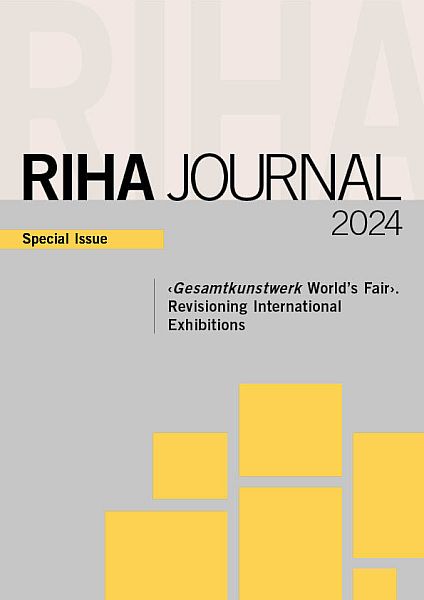RIHA Journal
About the Journal
Journal of the International Association of Research Institutes in the History of Art

The RIHA Journal was launched in 2010 by The International Association of Research Institutes in the History of Art (RIHA). It is a peer-reviewed and open access e-journal devoted to the full range of the history of art and visual culture. The RIHA Journal especially welcomes papers on topics relevant from a supra-local perspective, articles that explore artistic interconnections or cultural exchanges, or engage with important theoretical questions that are apt to animate the discipline. As a collective endeavor, the RIHA Journal seeks to share knowledge and materials issued by scholars of all nationalities, and by doing so, to make a significant contribution to dissolving the boundaries between scholarly communities. Languages of publication are English, French, German, Italian, or Spanish.Upcoming special issue:
Upcoming special issue:
'Gesamtkunstwerk World’s Fair'. Revisioning International Exhibitions
guest-edited by Buket Altinoba, Alexandra Karentzos and Miriam Oesterreich

From their beginnings in the mid-nineteenth century, the world’s fairs sought to generate a synthesized body of knowledge about the world by gathering together an encyclopedic and didactic collection of objects from a wide array of fields: technology, machinery, handicrafts, the visual arts, performance, and ethnography – knowledge made visible and experienced through artifacts sourced from all over the world. This expanded visual experience can also be understood as one that interprets the gaze as a catalyst for a multi-sensory perception and categorization of material culture, of both two- and three-dimensional objects of vision. Thus, these exhibitions not only synthesized 'the world', but they also synthesized arts, handicrafts, architecture, and technology into an imagined Gesamtkunstwerk. The objects and works of art – handcrafted or machine-made – displayed at the world’s fairs were conceived as a mass spectacle as they were turned into the signifiers of a narrative – imagined and presented as coherent – of technological progress, colonial expansion, and artistic innovation. The colonized regions were to stand in contrast to this, with ethnographica and handicrafts presented as traditional, 'authentic'. Nevertheless, a complex network of "shared histories" and transnational interconnections became manifest at the world’s fairs.



